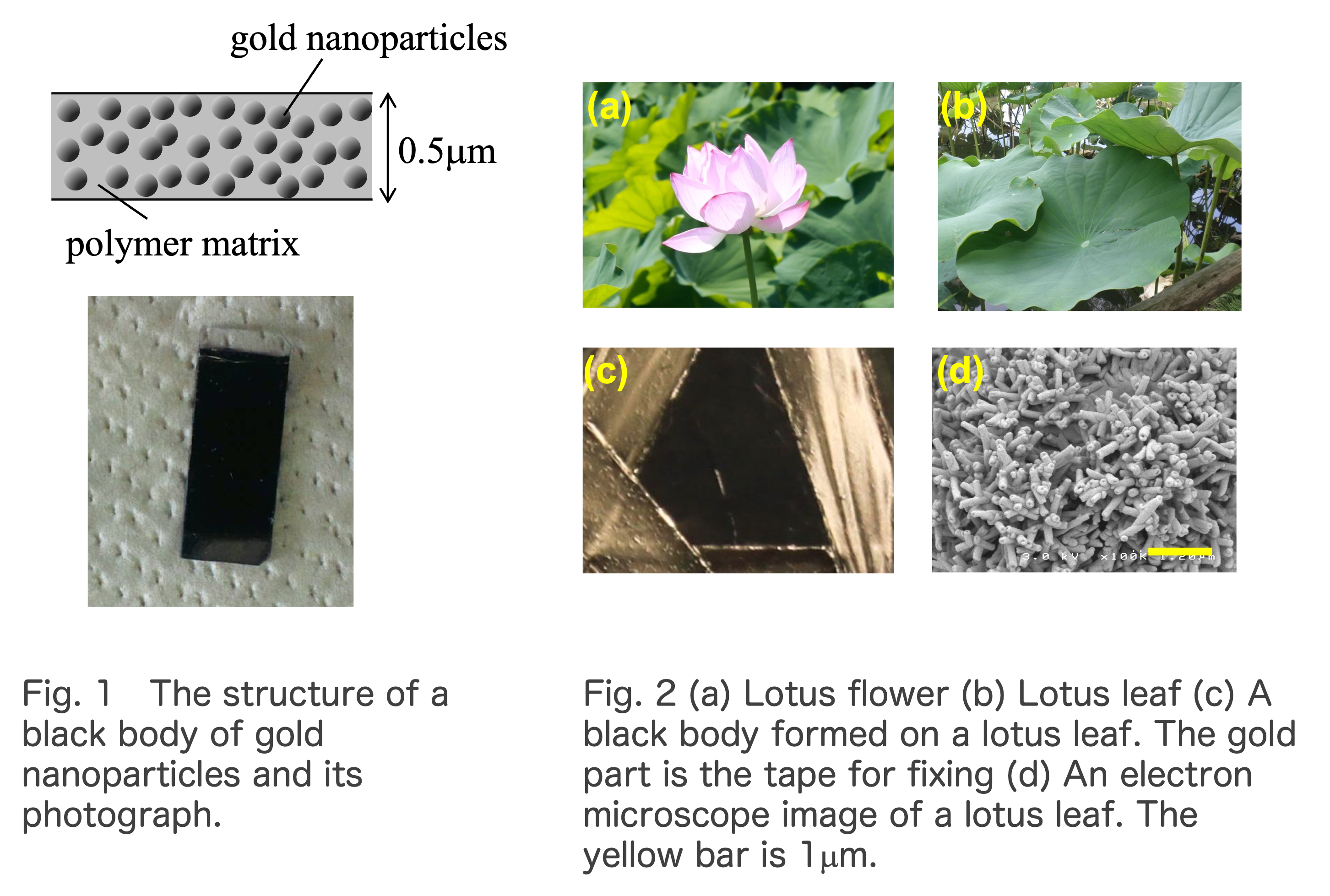Materials absorbing light and electromagnetic waves
Optical elements that absorb light, such as optical filters and blackbodies, are humble, but their importance has been recognized recently. (A blackbody is a substance that absorbs light at all wavelengths, but since this does not actually exist, we will refer to a substance that absorbs light over a wide range of wavelengths as a blackbody.)
Black paint and black ink are black, but both require thickness (several 10μm or more) to absorb light. However, surface plasmons in metal nanostructures can be used to create thin films that absorb light over a wide range of wavelengths, even when thin. We have fabricated a blackbody using gold nanostructures, as shown in Fig. 1. The thin film is about 0.5μm thick and absorbs most of the visible light.
Furthermore, we have succeeded in creating a black body using natural materials. The blackbody was realized by coating the surface of a lotus leaf with 10 nm thick gold (Fig. 2). Lotus leaves exhibit high water repellency because of their 10μm diameter bumps and the macaroni-like fine structure on their surface. We believe that when this surface is coated with gold, it traps light and becomes a black body. In addition to lotus, we also found that taro leaves and cicada wings show light-absorbing properties when coated with gold.
Materials that absorb not only light but also radio waves are also important. This is because it can suppress the radiation of unwanted radio waves. We are using genetic algorithms and neural networks to design materials that absorb radio waves, even thin films, sufficiently for the millimeter waves used in 5G and 6G.

Back to Research

